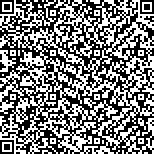本文已被:浏览 1006次 下载 646次
Received:February 10, 2022 Published Online:December 20, 2022
Received:February 10, 2022 Published Online:December 20, 2022
中文摘要: 目的 探讨胸腺鳞状细胞癌的CT影像特点与鉴别,提高对胸腺鳞状细胞癌的认识及诊断水平。方法 收集2014年6月至2021年6月陕西省森林工业职工医院经手术或穿刺病理证实为胸腺肿瘤患者39例的临床及影像学资料,其中25例胸腺鳞状细胞癌患者作为观察组,14例高危胸腺瘤患者作为对照组,总结并比较两组患者的临床表现、Masaoka分期与CT征象的差异。结果 胸腺鳞状细胞癌Masaoka分期多为Ⅲ期(28.0%,7/25)及Ⅳ期(52.0%,13/25),与高危胸腺瘤相比Masaoka分期差异有统计学意义( χ2=9.762, P=0.021)。胸腺鳞状细胞癌组肿瘤分叶状、边界模糊、心包侵犯和纵隔脂肪浸润的发生率高于高危胸腺瘤组(P<0.05);肿瘤内分隔、密度、强化程度、是否钙化囊变、灌铸型生长、大血管侵犯、胸膜侵犯、淋巴结转移、肺转移及胸膜种植在两组间差异无统计学意义(P>0.05)。结论 胸腺鳞状细胞癌临床表现无明显特异性,CT多表现为前中上纵隔分叶状肿块,边界模糊,部分沿大血管形态呈灌铸型生长,肿瘤对周围组织侵袭性强,可侵犯大血管、胸膜及心包,纵隔脂肪浸润多见,Masaoka分期多为Ⅲ、Ⅳ期。
中文关键词: 胸腺 胸腺上皮性肿瘤 鳞状细胞癌 体层摄影术,X线计算机
Abstract:Objective To explore the CT imaging features and differentiation of thymic squamous cell carcinoma to improve the recognition and diagnosis level of it. Methods Of 39 patients with thymic tumor confirmed by surgery or puncture pathology from June 2014 to June 2021 in Sengong Hospital of Shannxi Province, 25 patients with thymic squamous cell carcinoma were collected as observation group and 14 patients with high-risk thymoma were served as control group. The clinical manifestations, Masaoka staging and CT signs were summarized and compared between two groups. Results The Masaoka staging system showed that most of thymic squamous cell carcinoma were stage Ⅲ(28.0%, 7/25) and stage Ⅳ(52.0%, 13/25) in observation group, which were significantly different from those in control group( χ2=9.762, P=0.021). The incidences of lobulated tumor, blurred boundaries, pericardial invasion, mediastinal fat infiltration in observation group were statistical higher than those in control group(P<0.05). There was no significant difference in tumor internal partition, density, degree of enhancement, calcification and cystic, perfusion type growth, invasion of large vessels, pleural invasion, lymph node metastasis, pulmonary metastasis and pleural implantation between two groups(P>0.05). Conclusion There is no obvious specificity in the clinical manifestations of thymic squamous cell carcinoma. CT manifestations are mostly characterized by anterior middle and upper mediastinal lobular mass with blurred boundaries and perfusion growth along macrovascular shape in some of them. The tumor is highly invasive to surrounding tissues and can invade macrovascular, pleura and pericardium. Mediastinal fat infiltration are common, and Masaoka staging is mostly stage Ⅲ and Ⅳ.
文章编号: 中图分类号: 文献标志码:A
基金项目:
引用文本:
